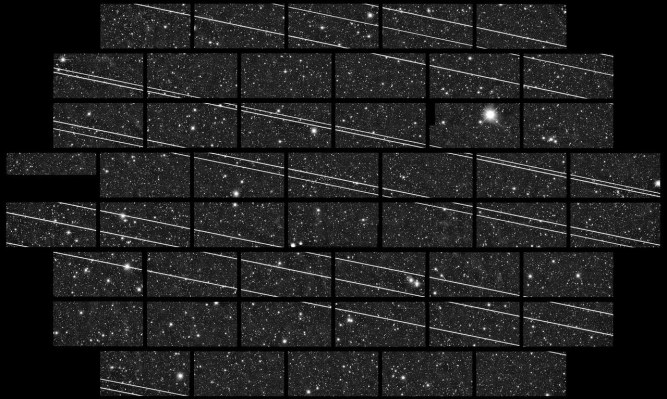It’s launch day for yet another batch of Starlink satellites, which will bring the total launched by SpaceX to 422. With each launch, there’s renewed discussion around the impact the growing constellation of low Earth orbit small satellites has on night-sky visibility and scientific research, and SpaceX has said it’s making changes to attempt to address those concerns. Now, SpaceX CEO Elon Musk has provided some more detail about some of the latest measures his company is taking to minimize Starlink’s impact on nighttime sky observation.
In response to a question about why the Starlink satellites have seemed to be even more visible and brighter in recent weeks, prompting many reports of them being spotted by more individuals, Musk said that this was due to the angle of the satellites’ solar panels during their orbital raise and parking maneuvers, and said that a fix is being deployed to address this “now.”
All satellites will also be equipped with “sunshades” starting with the ninth Starlink launch, which is still three launches away from the one that’s happening later today (Starlink 6). These will be made from “a special dark foam that’s extremely radio transparent,” which is important for the constellation’s main purpose of transmitting broadband internet connectivity to ground stations for use by customers on Earth.
SpaceX had previously discussed testing painting the Earth-facing side of Starlink satellites black in order to cut down their reflectivity, but this foam approach sounds like an additional measure that could go further. Ultimately, SpaceX anticipates launching many thousands of these small satellites, so it’s unlikely that the controversy around their impact on scientific observation is going anywhere soon, unless some of these measures really do significantly alter their nighttime visibility.
